Today I am sharing summer poems from Poems for the Very Young Child, compiled by Dolores Knippel and illustrated by Mary Ellsworth, Whitman Publishing Co., 1932
Sunday, June 30, 2019
Saturday, June 29, 2019
Helen Korngold Diary June 23-29, 1919
 |
| Helen Korngold, December 1919, New York City |
In 2001 I discovered a diary in a Lansing, Michigan shop. I was charmed by the writer and brought the diary home with me. I spend years researching Helen Korngold. This year I am sharing the diary every week along with my research notes.
Helen recently graduated from Washington University in St. Louis, MO.
June
Monday 23
Riding
Tuesday 24
Unexciting
Wednesday 25
Jr. Council Card Party at Highlands. Karol & Hyman took us home.
Thursday 16
Big night. Went slumming. K & Sofie Stampfer – Clara Marx & Hyman Stein – Bill Weiser & myself – we had a wild time – Hop Alley & all low-class cafés.
Friday 27
Cleaned up & slept
Saturday 28
Party at Levy’s
Sunday 29
Ida came over - Aunt B.
NOTES:
June 25
Karol Korngold, Helen's brother
June 26
Hop Alley was the name for Chinatown. It may have gotten that name for the opium addicts, or hop heads. See articles here and here.
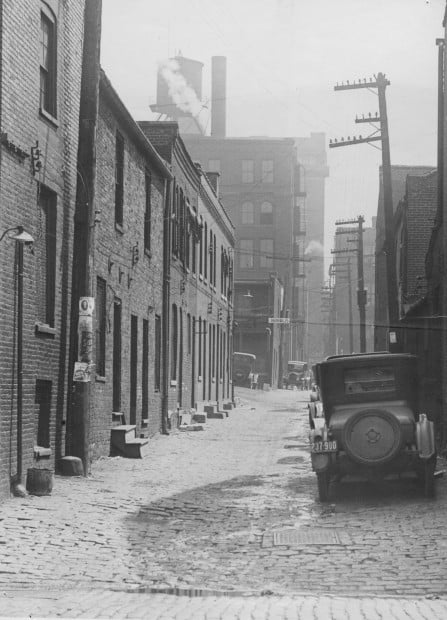 |
| Hop Alley in 1925. St. Louis Post-Dispatch |
June 28
Mae Hannah Levy (born 1897) appears in the Washington University class of 1918, and was active in hockey, the Woman’s Athletic Assoc, the YWCA and French Club. She appears on the 1916 and 1917 City Directory as a student living on Waterman St. Alfred Levy on the 1920 St. Louis Census is a president of a white collar manufacturing factory. His family included Gussie, son Moe and daughters Mae H. age 23, Adele, and Ruth. Alfred has an ancestry.com family tree. Mae married Perez Falk in 1923 and he died Dec. 11, 1923. The 1930 St. Louis Census shows Mrs. Mae Falk, widow, living with her parents.
The 1900 St. Louis Census shows Perez, age 13, living with his parents Max and Laurie and siblings Kenna and Edmund. Max was a traveling salesman for a hat wholesaler. Perez Falk’s WWI Draft Registration shows he was born July 20, 1886, in Joplin, Mo and worked as a traveling salesman. He had black hair and blue eyes. A family tree on ancestry.com shows she also married Isodore Miller. Mae died in 1981.
June 29
Aunt Beryl Frey, her mother's sister
*****
On June 28 the Treaty of Peace was signed, formally ending WWI.
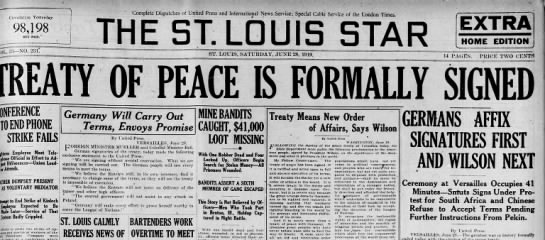
Note also the article "Women to Attend Ratification of Suffrage Measure"
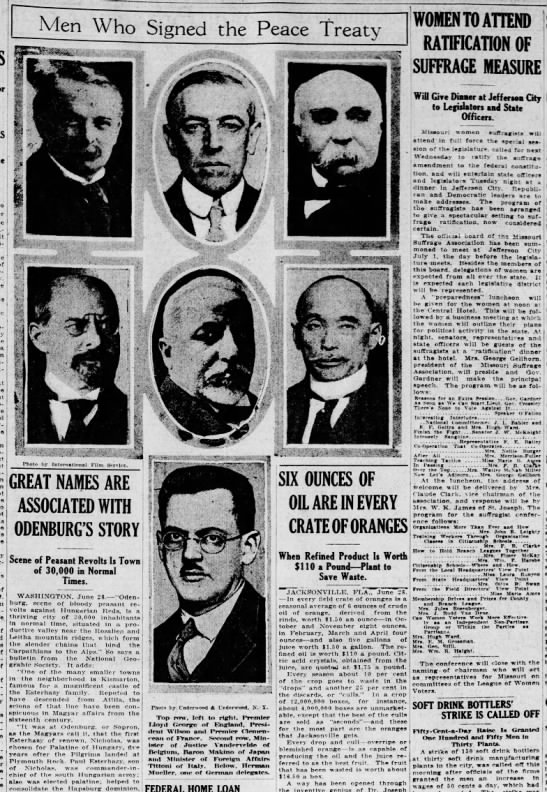
 |
| June 23, 1919, St. Louis Post-Dispatch. College pranks. |
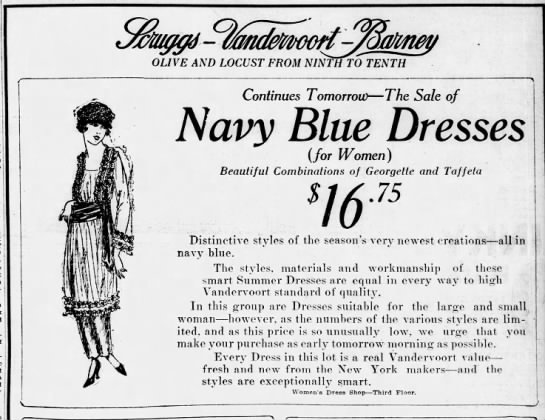 |
June 23, St. Louis Post-Dispatch ads include this rather risque photo for sports fashions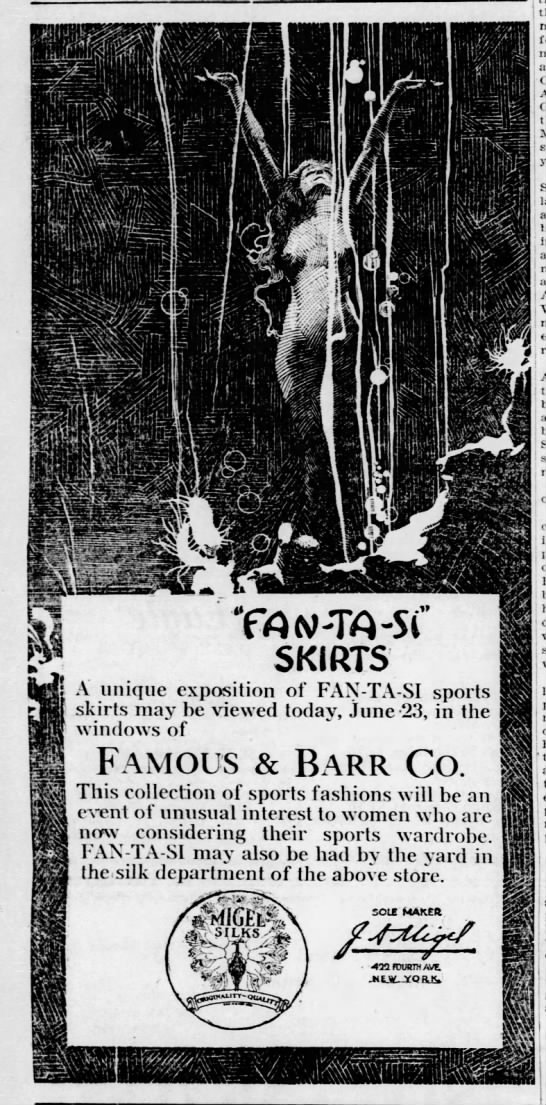 |
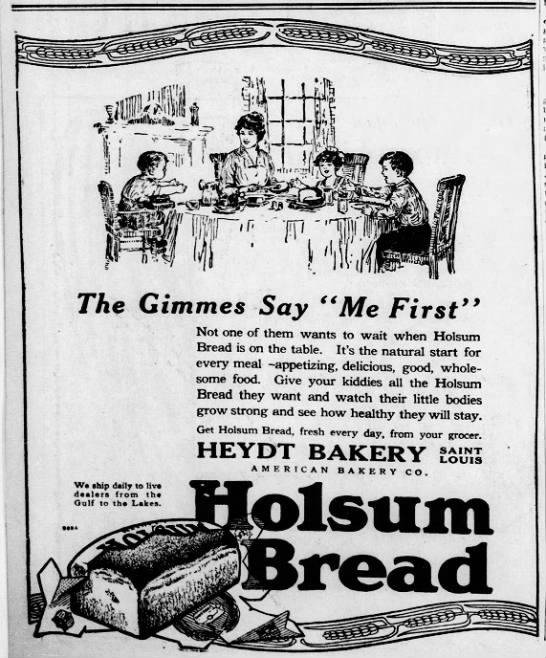
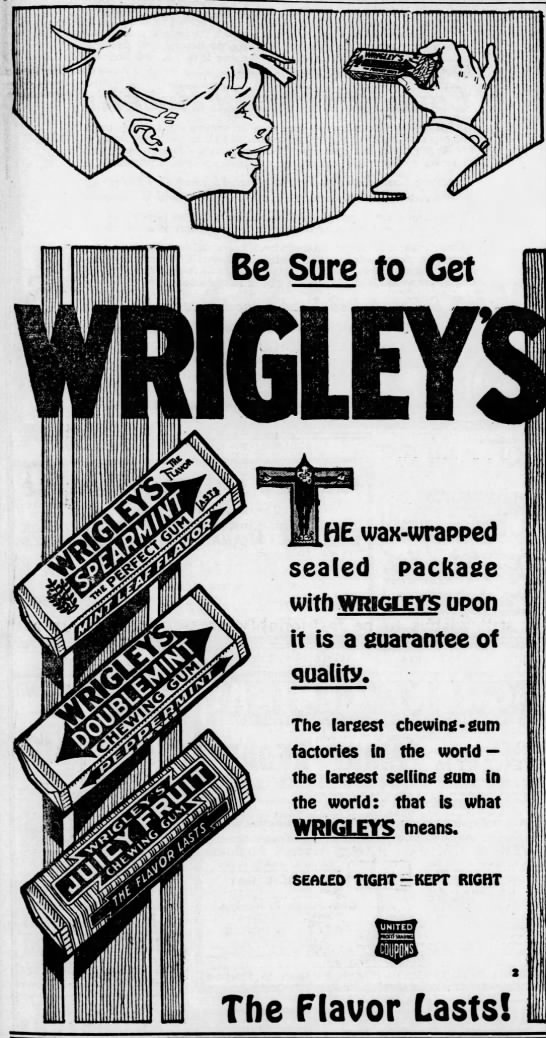
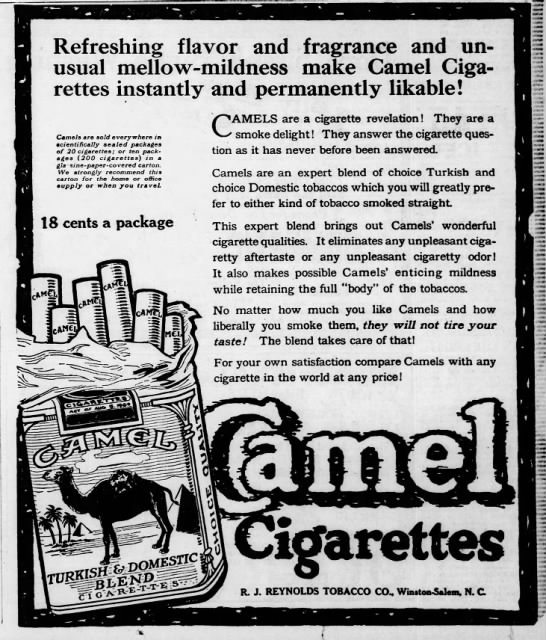
And my favorite ad!
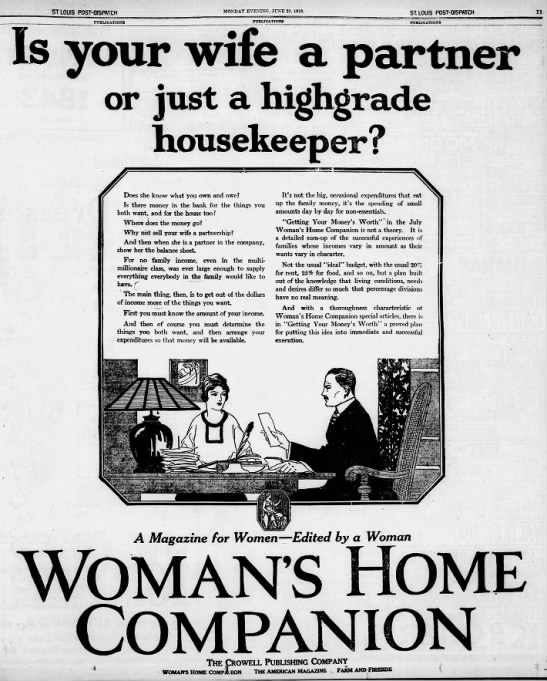
Wednesday, June 26, 2019
Using Newspapers for Patterns
On the free table was a paper bag filled with homemade clothing patterns using newspapers and magazine pages. The pattern for an oven mitt still had fabric pinned to it.
I believe the magazine page dates to the 1950s based on the Palmolive illustration style and the article on the back about WWII Flying Tigers pilot Jack Cornelius.
The photo caption reads, "Stocky Jack Cornelius left an airline job to take over the engineering of the Conest..." The story talks about the Flying Tiger Line founder Prescott hiring the Texan Cornelius who was working for a New York Airline. Prescott started the first scheduled cargo airline and named it for the WWII Flying Tigers unit, a 100 man unit that "compiled the greatest air combat record in history" according to a 1991 article in the LA Times, inspiring a John Wayne movie.
Other pattern pieces were for a child-sized shirt. And there were several heart shapes as well.
Snippets from the newspapers showed an Indiana connection.
I loved seeing the vintage advertisements! Roman Meal Bread was promoted as a way to keep thin. Now we are all about low carb diets.
Esther Williams in Million Dollar Mermaid came out in 1952.
The television guide line up gives an idea of the date for some pieces.
I believe the magazine page dates to the 1950s based on the Palmolive illustration style and the article on the back about WWII Flying Tigers pilot Jack Cornelius.
The photo caption reads, "Stocky Jack Cornelius left an airline job to take over the engineering of the Conest..." The story talks about the Flying Tiger Line founder Prescott hiring the Texan Cornelius who was working for a New York Airline. Prescott started the first scheduled cargo airline and named it for the WWII Flying Tigers unit, a 100 man unit that "compiled the greatest air combat record in history" according to a 1991 article in the LA Times, inspiring a John Wayne movie.
Other pattern pieces were for a child-sized shirt. And there were several heart shapes as well.
Snippets from the newspapers showed an Indiana connection.
Frankfort, Indiana perhaps?
I loved seeing the vintage advertisements! Roman Meal Bread was promoted as a way to keep thin. Now we are all about low carb diets.
Esther Williams in Million Dollar Mermaid came out in 1952.
The television guide line up gives an idea of the date for some pieces.
Frugal sewers are still around. When I started quilting in 1991 I joined a group of quilters who were older with years of experience. One lady used cereal boxes to make her cardboard templates. A friend in my current group uses flexible plastic cutting mats from the dollar store instead of those sold at the hobby stores.
Tuesday, June 25, 2019
Rilke in Paris: Rainer Maria Rilke and the Writing of The Notebooks of Malte Laurids Brigge
"I am in Paris; those who learn this are glad, most of them envy me. They are right. It is a great city; great and full of strange temptations." from The Notebooks of Malte Laurids Brigge by Rainer Maria Rilke
I opened up my copy of Notebooks and was amazed to find underlinings and notations and bent pages and bookmarks. How could I have forgotten this book?
"I have succumbed to these temptations, and this has brought about certain changes, if not in my character, at least in my outlook on the world, and, in any case in my life." from The Notebooks of Malte Laurids Brigge by Rainer Maria Rilke
Also included is Rilke's poem essay Notes On the Melody of Things.
The book is a concise overview of Rilke's life from the young poet seeking a mentor through his development as a writer, including his influences. I was interested to read how Nietzsche's The Birth of Tragedy influenced Rilke.
Beautiful black and white photographs of Rilke's Paris illustrate the text.
An entirely different conception of all things had developed in me under these influences; certain differences have appeared that separate me from other men, more than anything heretofore. A world transformed. A new life filled with new meanings." from The Notebooks of Malte Laurids Brigge by Rainer Maria Rilke
We encounter Rilke as a solitary whose quest for authenticity separated him from others so that even when they were in the same city he only dined with his wife weekly. He believed his mentor, the sculptor Rodin, when he preached that artists must give up personal life and happiness for their art. Rilke had presented himself to Rodin and was taken in, working as a personal secretary in exchange. A break forced Rilke on his own and he took residence in Paris, and over the next twenty years, he returned to "the same Paris" between his wanderings across Europe.
Rilke spent time in the Luxembourg Gardens, observing and learning from the beauty and the ugliness he saw. I recalled one of my favorite paintings from the Philadelphia Museum of Art, In the Luxembourg Gardens by John Singer Sargent, painted in 1879. I always wanted to be transported into that scene.
 |
| In the Luxembourg Gardens by John Singer Sargent, PMA |
"For the moment I find it a little hard because everything is too new. I am a beginner in my own circumstances." from The Notebooks of Malte Laurids Brigge by Rainer Maria Rilke
I love to learn how writers work. Betz offers us a detailed look into the "genesis" of The Notebooks. First came Rilke's encounter with the story of a poet who had lived in Paris for some time, and feeling a failure, died at age thirty-two. Rilke saw the Notebooks as a "sequel to The Stories of God." He became haunted by his imagined poet Malte. He worked on the book for years; "Prose must be built like a cathedral," he wrote Rodin.
"My God, if any of it could be shared! But would it be then, would it be? No, it is only at the price of solitude." from The Notebooks of Malte Laurids Brigge by Rainer Maria RilkeThe Notebooks "is a confession and a lyrical novel of sorts, a study in psychology and a treatise on the interior life," Betz wrote, "a moving example of maturation through solitude and lucid contemplation of the loftiest problems in life." I am glad to have read Rilke in Paris for it has brought The Notebooks back into my life.
I received a free ebook from the publisher through NetGalley in exchange for a fair and unbiased review.
Rilke in Paris
by Rainer Maria Rilke and Maurice Betz*
Translated by Will Stone
Steerforth Press/Pushkin Press
Published 06/25/2019
$15.95 paperback
ISBN: 9781782274742
*Maurice Betz was Rilke's translator.
Sunday, June 23, 2019
Hap & Hazard And the End of the World by Diane DeSanders
No one will tell me anything.~ from Hap and Hazard and the End of the World by Diane DeSandersThe world is a mystery to a child. Adults are the most mysterious of all.
I once wrote a poem about how I loved a child's "fragile questionings." I remembered that line while reading Hap & Hazard and the End of the World.
Most adults don't want to answer a child's questions, especially if the question threatens to upset the web of protection adults spin around a child. We tell them to believe in Santa Claus, in the Tooth Fairy, in the Easter Bunny--even when other children reveal they are not real.
I remember being horribly embarrassed when a Third-Grade boy explained that there is no Tooth Fairy. Too late--I had already shared the silver dollar I found under my pillow, proudly exclaiming it was from the Tooth Fairy. And I remember how our son pretended to believe in Santa Claus because it was expected.
The girl in this book pushes adults to tell her the truth. She desperately wants to understand the world and her life.
The book shares the loneliness of a girl who does not fit in."It seems there is something wrong with me," she cries out, "other people do not appear to be having this problem...other kids seem to know what to do and join in." What's wrong with me, she wonders. Oh, I remember feeling that way after a move when everything was so foreign, right down to the playground games.
When adults have problems, we think that ignorance protects the children. What is wrong with Daddy? the girl asks. He was off to war during her first years. He returns a bitter, angry man. How can her parents explain what they don't even understand themselves? The horror of war and the blasted bodies of comrades in arms, and the horrible pain of mutilation and the months of rebuilding what once was a strong and young body? Being crippled, self-medicating?
Set in the post-WWII years, so many things the girl observes were familiar. Vivid details of lipsticked cigarettes and willow trees, which were also in my childhood yard. Make-believe stories about The Girl recalling my own make-believe stories about being an orphan in Scotland or the star of the Nancy Show. The girl's mother retreats to her sewing room, a feeling I know well.
There is humor in the novel.
I recently realized that grown-ups don't know what you're doing if they're not looking at you. Although you have to watch out for the sides of their eyes. ~from Hap and Hazard at the End of the World by Diane DeSanders
And a horrible scene when an older boy abuses her trust and admiration.
There is a change in the universe. There are no more witches and goblins out there. There is no Blue Fairy. The world is plain and flat now, more gray, the mystery and brilliance gone out of it And all of the darkness is inside of me.~ from Hap and Hazard and the End of the World by Diane DeSanders
The novel left me with an ache.
I received a copy of the book from the publisher in exchange for a fair and unbiased review.
Learn more about the author and book at
http://vol1brooklyn.com/2018/01/09/revisiting-the-post-war-moment-diane-desanders-on-writing-hap-and-hazard-and-the-end-of-the-world/
including the author reading from the novel at
https://www.youtube.com/watch?v=9maS7Vn1hgs&feature=youtu.be
Haop & Hazard at the End of the World
by Diane DeSanders
Bellevue Literary Press
Ebook
ISBN: 9781942658375
Trade Paper
List Price US $16.99
ISBN: 9781942658368
Saturday, June 22, 2019
Helen Korngold Diary: June 16-22
100 years ago in St. Louis, MO, a Washington University student kept a diary. I found it in an antique shop in 2001. I was so taken by the author that I spent years researching her, her family, and the people and places she wrote about. This year I am sharing weekly posts from Helen Korngold's diary along with my research.
Helen's school days are over. The weather has turned hot. There isn't much to write about over the next weeks.
June
Monday 16
Haven’t recovered from effect of last night – Hope I get to sleep all afternoon.
Tuesday 17
Tired.
Wednesday 18
Picnic of Y.H.T.S.S. Highlands – Bernard Spiro came out in evening and took me riding on all the things & swimming & home. Had a dandy time. From now on will not be very full in my notes – too hot.
 |
| June 18, 1919 ad from St. Louis Star |
Thursday 19
Tired. Slept 2 hrs.
Friday 20
Nothing exciting
Saturday 21
Downtown – lunch at Leader
Sunday 22
Nothing doing.
Notes:
June 18
YHTSS is likely her Sunday School class. A history of the movement for Jewish religious education patterned after the Christian Sunday School can be found here.
June 15
Forest Park Highlands was an amusement park located in St. Louis. It was the sight of the former St. Louis World's Fair and is today the site of The Forest Park Community College.
http://www.forestparkhighlands.com/
http://fox2now.com/2013/07/18/remembering-forest-park-highlands-amusement-park/
June 22
The Grand Leader Department Store tea room in downtown St. Louis. Learn more about its history here.
Read about the history of Stix, Bauer and Fuller, previously known as The Grand Leader, and the tea room here.
Other news this week in 1919:
The Uncle Wriggly Coloring Contest had a huge response!
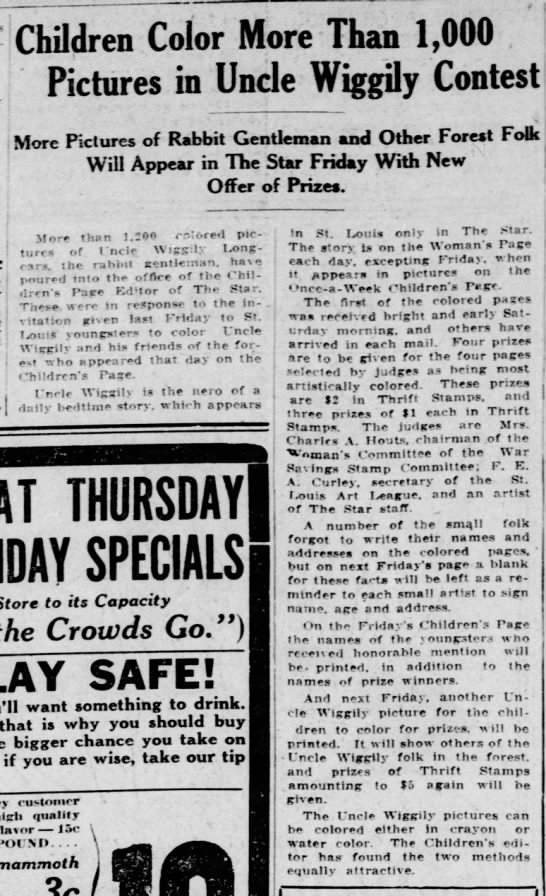 |
| June 18, 1919 St. Louis Star article |
Daylight Savings Time was controversial.
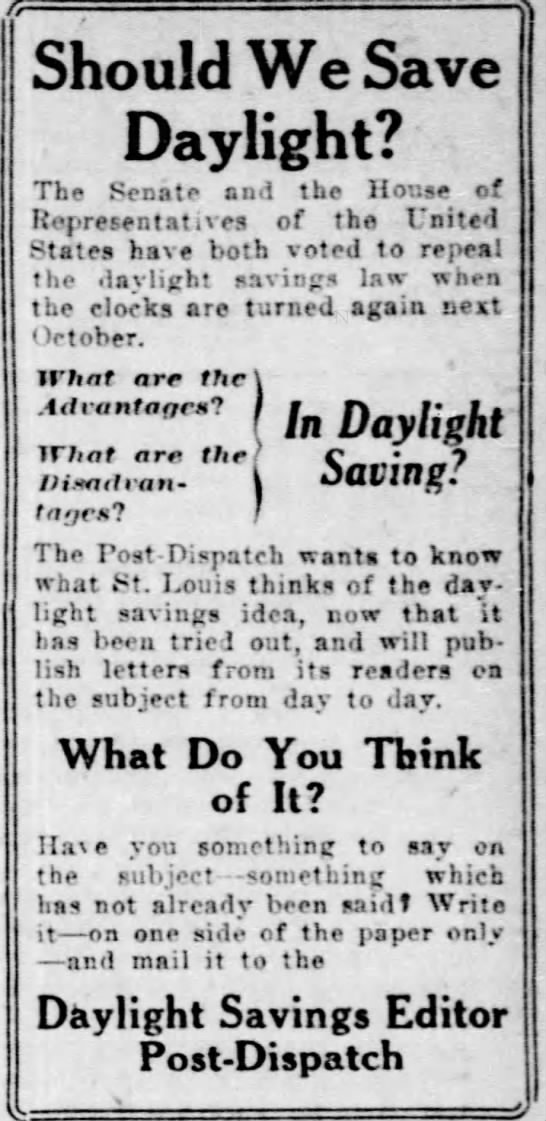
And so was the Mexican Border.

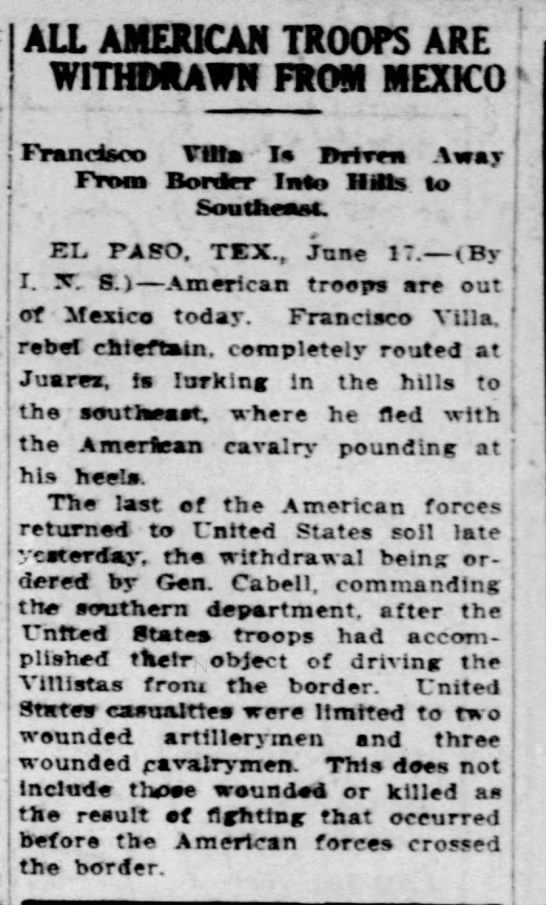
 |
| June 21, 1919 from St. Louis Star |
Alcoholic Blues was a popular song by the Tin Pan Alley hit writer Albert Van Tilzer. I have the sheet music in my personal collection. Listen to Bill Murray sing it here.
The Alcoholic Blues
(Albert Von Tilzer / Edward Laska)
I love my country, 'deed I do
But oh, that war has made me blue
I like fightin', that's my name
But fightin' is the least about the fightin' game
When Mister Hoover said to cut my dinner down
I never even hesitate, I never frown
I cut my sugar, I cut my coal
But now they dug deep in my soul
I've got the blues, I've got the blues
I've got the alcoholic blues
No more beer, my heart to cheer
Goodbye whiskey, you used to make me frisky
So long highball, so long gin
Oh, tell me when you comin' back agin
Blues, I've got the blues
Since they amputated my booze
Lordy, Lordy, war is well
You know I don't have to tell
I've got the alcoholic blues
Some blues, I've got the blues
Prohibition that's the name
Prohibition drives me insane
I'm so thirsty, soon I'll die
I'm simply goin' to 'vaporate, I'm just that dry
I wouldn't mind to live forever in a trench
Just if my daily thirst they only let me quench
And not with Bevo or Ginger Ale
I want the real stuff by the pail
I've got the blues, I've got the blues
I've got the alcoholic blues
No more beer, my heart to cheer
Goodbye whiskey, you used to make me frisky
So long highball, so long gin
Oh, tell mw when you comin' back agin
Blues, I've got the blues
Since they amputated my booze
Lordy, Lordy, war is well
You know, I don't have to tell
I've got the alcoholic blues
Some blues, I've got the blues
Thursday, June 20, 2019
Daisy Jones and the Six
I have no nostalgic need to 'revisit' the Seventies, especially it's rock and roll scene with its drugs and sex. I basically missed it the first time. 1972 found me married at age 19, working while my husband finished his professional degree. For fun we took Ewall Gibbons to the woods, organic gardened, and listened to John Denver or Russian Orthodox chants while drinking Earl Grey tea.
I never heard Stevie Nicks or Fleetwood Mac or other bands who inspired Taylor Jenkins Reid. I had just heard their names. I am that clueless. So it took me a long while to warm up to the idea of reading Daisy Jones and the Six.
Then, the First Look Book Club shared the beginning of the book. I liked it. I had noted rave reviews the audiobook. So I went online to Libby and put a hold on an audiobook through my local library. And six weeks later I started to listen to it.
Twenty-four hours later I had finished all nine hours of the audiobook. And I don't really like audiobooks. I did not even have a lot of hand quilting to keep me busy while listening. Not only did I stay awake--I could not stop listening. I just sat there and listened.
The book is written like a documentary, a collection of oral histories pieced together to tell the story of the rock and roll band The Six, its lead singer Billy Dunne, and Daisy Jones who is beautiful and fragile and self-destructive and fierce.
People don't communicate effectively in real life, and miscommunication---and no communication---between self-absorbed people drive much of the angst in the book. But there is also strength and hope and the daily decision to do the right thing by the people we love.
If the tension between Billy and Daisy is central, it is Billy's relationship with his wife Camilla that is most interesting. Camilla knows what she wants and what she is willing to give up. When she gets pregnant Billy marries her and she is relentless in insisting on having the life she wants for herself and her children. Her faith in their future keeps Billy straight while he daily battles the lure of his past addictions, determined to be the man his wife believes he can be.
Billy has Camilla's faith. But the beautiful Daisy was never cherished by her folks or by the men she sleeps with. Since she was a young teen, she was allowed to party and do whatever she wanted. She has one friend who is there for her. Daisy wants to sing and write her own songs. After signing a contract she discovers the studio wants to mold her image and repertoire. It is the price she must pay to be allowed to sing.
Fatefully, she ends up on a tour opening for Billy and The Six. One night she sings with Billy and a musical legend is born. Their voices are made for each other. Perhaps they are made for each other. But Billy can't go there, Camilla is his lodestar. And the attraction turns their relationship ugly as their music skyrockets to the top of the charts.
The other band member's stories are also complicated and interesting. Keyboardist Karen is determined to have a successful career, which for a woman in the 70s involves a huge sacrifice. Graham as Billy's younger brother willingly takes a back seat but is pushed away the one time he really needs Billy. The musicians in the band want a voice and equal time and resent that Billy is the self-appointed lead artist who makes all the decisions.
Success can't guarantee happiness. The band members spiral into their personal hells. In a heartbreaking scene, Billy is saved by a stranger. And Camilla, that remarkable woman, unmistakeably stakes her claim, yet with love and concern.
There is a surprise twist at the end. Poignant, but perhaps unnecessary.
I loved this story. I would read the book even after listening to it. The book I wanted to ignore wants a place on my bookshelf. Not because it is what the New York Times reviewer Eleanor Henderson calls "A Snapshot of the Bell-Bottoms Seventies" but because Reid has created characters of such depth that I care about them and remember them.
Daisy Jones and the Six
by Taylor Jenkins Reid
Publication March 2019
Ballantine Books
Audiobook
ISBN 1524798622 (ISBN13: 9781524798628)
I never heard Stevie Nicks or Fleetwood Mac or other bands who inspired Taylor Jenkins Reid. I had just heard their names. I am that clueless. So it took me a long while to warm up to the idea of reading Daisy Jones and the Six.
Then, the First Look Book Club shared the beginning of the book. I liked it. I had noted rave reviews the audiobook. So I went online to Libby and put a hold on an audiobook through my local library. And six weeks later I started to listen to it.
Twenty-four hours later I had finished all nine hours of the audiobook. And I don't really like audiobooks. I did not even have a lot of hand quilting to keep me busy while listening. Not only did I stay awake--I could not stop listening. I just sat there and listened.
The book is written like a documentary, a collection of oral histories pieced together to tell the story of the rock and roll band The Six, its lead singer Billy Dunne, and Daisy Jones who is beautiful and fragile and self-destructive and fierce.
People don't communicate effectively in real life, and miscommunication---and no communication---between self-absorbed people drive much of the angst in the book. But there is also strength and hope and the daily decision to do the right thing by the people we love.
If the tension between Billy and Daisy is central, it is Billy's relationship with his wife Camilla that is most interesting. Camilla knows what she wants and what she is willing to give up. When she gets pregnant Billy marries her and she is relentless in insisting on having the life she wants for herself and her children. Her faith in their future keeps Billy straight while he daily battles the lure of his past addictions, determined to be the man his wife believes he can be.
Billy has Camilla's faith. But the beautiful Daisy was never cherished by her folks or by the men she sleeps with. Since she was a young teen, she was allowed to party and do whatever she wanted. She has one friend who is there for her. Daisy wants to sing and write her own songs. After signing a contract she discovers the studio wants to mold her image and repertoire. It is the price she must pay to be allowed to sing.
Fatefully, she ends up on a tour opening for Billy and The Six. One night she sings with Billy and a musical legend is born. Their voices are made for each other. Perhaps they are made for each other. But Billy can't go there, Camilla is his lodestar. And the attraction turns their relationship ugly as their music skyrockets to the top of the charts.
The other band member's stories are also complicated and interesting. Keyboardist Karen is determined to have a successful career, which for a woman in the 70s involves a huge sacrifice. Graham as Billy's younger brother willingly takes a back seat but is pushed away the one time he really needs Billy. The musicians in the band want a voice and equal time and resent that Billy is the self-appointed lead artist who makes all the decisions.
Success can't guarantee happiness. The band members spiral into their personal hells. In a heartbreaking scene, Billy is saved by a stranger. And Camilla, that remarkable woman, unmistakeably stakes her claim, yet with love and concern.
There is a surprise twist at the end. Poignant, but perhaps unnecessary.
I loved this story. I would read the book even after listening to it. The book I wanted to ignore wants a place on my bookshelf. Not because it is what the New York Times reviewer Eleanor Henderson calls "A Snapshot of the Bell-Bottoms Seventies" but because Reid has created characters of such depth that I care about them and remember them.
Daisy Jones and the Six
by Taylor Jenkins Reid
Publication March 2019
Ballantine Books
Audiobook
ISBN 1524798622 (ISBN13: 9781524798628)
Subscribe to:
Posts (Atom)

























